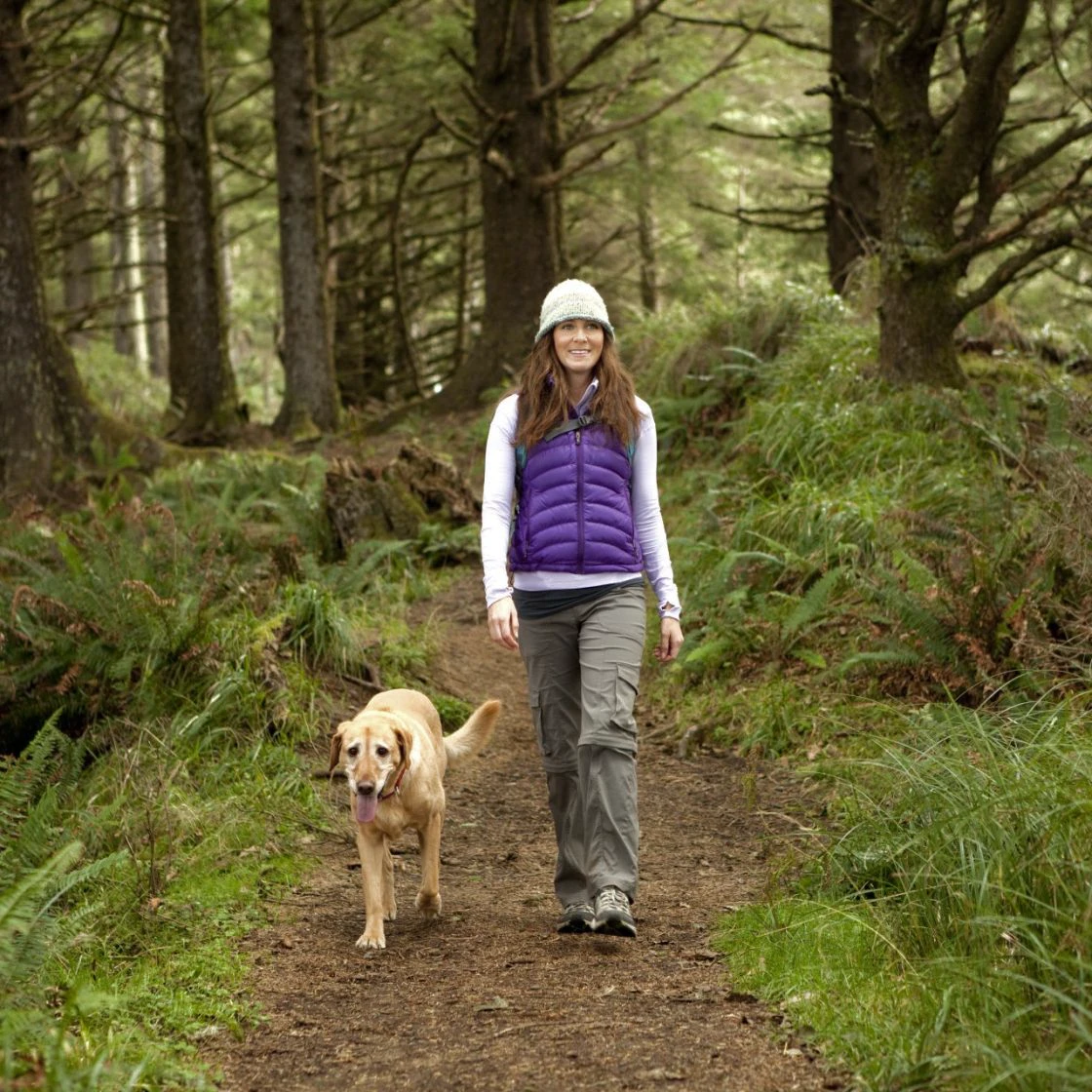There’s more to walking than you might think, and making small tweaks to your technique can make a huge difference in the long run.
Disabilities, old age and serious injuries aside, walking is a fairly straightforward and relatively easy activity. All you’ve got to do is put one foot in front of the other and you’re off. But anyone who’s tried walking long distances will tell you just how painful it can be.
Whether you’re hiking up a mountain, trekking across woodlands or strolling around a new city, spending hours on your feet inevitably results in aching arches, tired legs and DOMS the following day.
And while a little muscle soreness is often a good thing (proof your quads, calves and hamstrings have had a good workout in addition to your cardiovascular system), there are ways to make you a more efficient walker. Get your technique right – alongside the right footwear – and you’ll find that you’re able to go for longer without those niggles setting in.
May is National Walking Month, which happily coincides with the first of our three Strong Women Treks, so there’s no better time to dust off your walking shoes. Before you do, however, Tanya Braun, director of policy and communication at walking charity Living Streets, tells Stylist that it’s important to know how to walk correctly to ensure we’re not causing unnecessary damage and strain to our muscles, joints and posture.
“Walking is an activity that involves moving your entire body… but many of us don’t give much thought to whether we are walking correctly or how to walk as we’ve been doing it since we took our first steps.”

She’s right, of course: plenty of common injuries are caused by bad walking techniques. If you don’t pick up your feet enough or land funnily, you’ll run the risk of ankle sprains, lower back pain and plantar fasciitis. Tread too heavily on your heels and you’re looking down the barrel of shin splits. And, of course, walking can increase your chances of developing blisters and calluses – particularly if you’re not wearing the right shoes.
So, with that in mind, Braun has shared her 10 top tips for improving your walking technique for an altogether more enjoyable experience.
How to improve your walking technique
1. Keep your head up
When you’re navigating uneven terrain, it’s sensible to look where you’re treading. But Braun warns that continually looking down at your feet or phone can cause put extra strain on your neck and spine.
To avoid this, Braun suggests: “Aim to focus on standing tall with your chin parallel to the ground and ears aligned above your shoulders – this will mean that the weight of your head is transferred down into the feet and ground.
“My top tip is to keep your gaze about five metres in front of you. That way, you’ll be able to avoid any oncoming obstacle, while preventing upper body tension.”
2. Keep your back long
“Focus on elongating your spine while you walk; avoid slouching, hunching or leaning forward, as these movements can put stress on your back muscles and cause you further pain,” Braun explains.
3. Try to relax your shoulders
Ah, the shoulders. Gut aside, it’s the one part of the body that soaks up stress like a thirsty sponge. Tight shoulders are a problem whether you’re working at a desk, trying to do an upper-body workout or walking.
“Being tense or hunched forward can result in a strain on the muscles and joints in the shoulders and your upper back,” says Braun.
“To avoid this, think about keeping your shoulders away from your ears. If you feel them rising, do a few shoulder shrugs to reset and relax.”
4. Engage your core
We’ve spoken about how critical it is to have a strong core for running, but it’s not just important for moving at speed. While walking, you want to engage the core in order to maintain balance and stability. That’ll not only protect the lower back from unnecessary pressure but also reduce the risk of rolling your ankles.
5. Try placing your foot down heel first
Lots of us shuffle along, which can result in various strains and twinges. Try to think about walking heel-to-toe – striking the ground with your heel first and then rolling through your heel to your toe. It might seem unnatural if you’ve never really thought about how you move but it’ll soon become second nature.
6. Don’t stride out
Runners are often warned to keep their strides short to avoid hyperextension. Why? Because stretching the leg in front of you can stress out the ligaments around the knee and also slows down your cadence (the pace at which you step). It’s the same with walking: shorter, faster steps are a better bet than long, straight strides. Try to keep a slight bend in your knee with every step you take.

7. Keep your hips straight
There are times when you’ll want to swing your hips from side to side… but the trails aren’t one of ‘em.
“Keep your hips facing forward in front of you, holding them steady with each stride. Swaying your hips puts stress on your hip flexors, which can result in pain and cramping, so it’s important to ensure that your hips are in the correct position as you walk,” Braun explains.
8. Warm up (yes, even walkers need to do it)
Most of us do a few dynamic stretches before a run or dedicate a few minutes to mobility ahead of a strength workout, but how often have you warmed up before a walk?
Braun says that if you’re planning to go on a long walk or complete a trek, you’ll need to get the body moving before you set off.
Warm up with these simple steps to reduce the possibility of over-exertion on your muscles:
- Make circles with each ankle (stand with one hand on a wall for support)
- March for 60 seconds on the spot
- Make slow circles with your hips and legs (again, using the wall for support if you need it) for 30 seconds one way, 30 seconds the other
- Swing each leg front to back and side-to-side four times.
9. Walk at a brisk pace
However you walk, it’s going to offer benefits. Taking a leisurely stroll after lunch helps with digestion while turning your 3pm meeting into a walk-and-talk will see you crush your step count and productivity. Walking back from work might even be the mental tonic you need to de-stress from the day.
But to reap the full health benefits, you should aim to walk at a slightly faster pace than your average stroll. Ideally, you’d be sweating a little – a good sign that your heart rate is elevated.
“The best way to tell if you’re walking fast enough is by testing your speech,” Braun says. “You should be able to talk but not sing a song while walking.”
Source: STYLIST
Stay ahead with the latest updates!
Join The Podium Media on WhatsApp for real-time news alerts, breaking stories, and exclusive content delivered straight to your phone. Don’t miss a headline — subscribe now!
Chat with Us on WhatsApp







